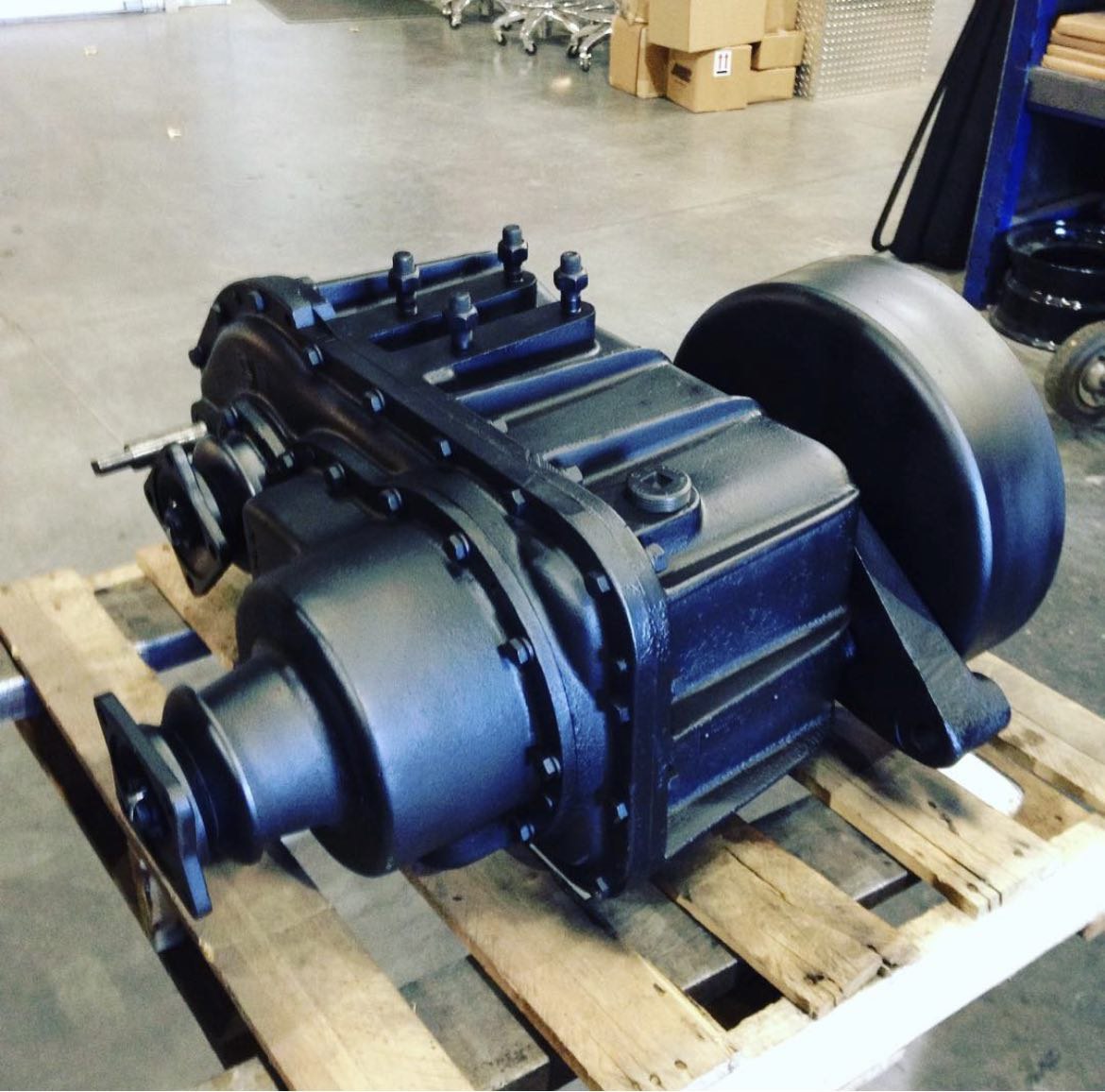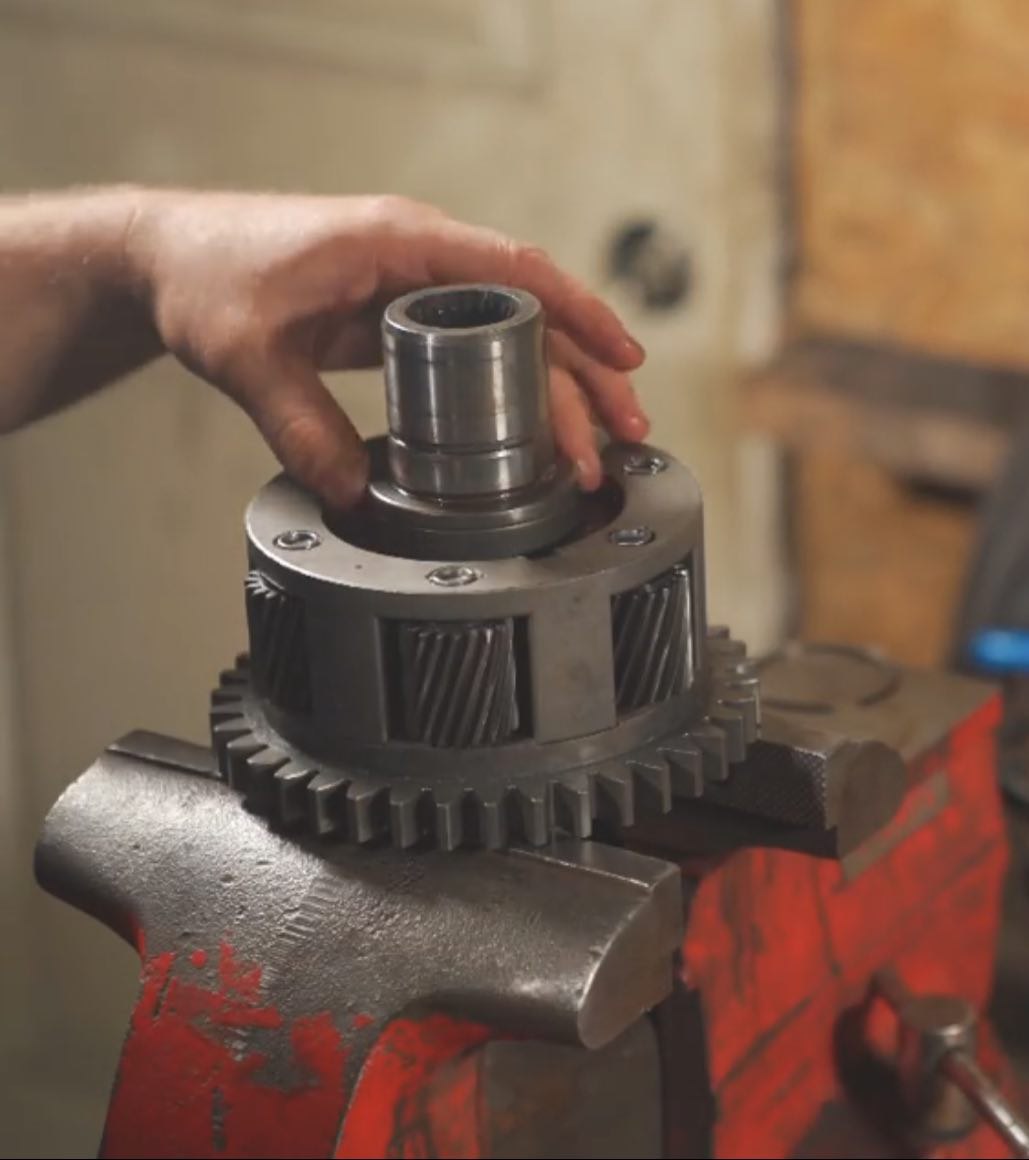Knowing the warning signs of a bad transfer case is important if you drive a Jeep. The transfer case is a critical component in your vehicle that manages power delivery from the transmission to the wheels. It is responsible for shifting your Jeep into a four-wheel drive and distributing torque to all four tires when needed. A bad transfer case can lead to severe damage in other areas of your Jeep, so addressing it as soon as you notice any symptoms that suggest an issue is essential.
What Is a Transfer Case in a Jeep?

In modern Jeeps, an all-wheel-drive system and a full-time 4WD system that requires no manual intervention are often available. This system is like the part-time transfer case, allowing for low-range selection but is electronically controlled and operates constantly. It selects the appropriate amount of power for each axle based on input from various sensors. This system is better suited for everyday driving than the traditional part-time transfer case and offers superior traction, stability, and performance.
Common Causes for Transfer Case Damage in Jeeps
There are several common causes of transfer case damage in Jeeps. One of the most common causes is a lack of lubrication. The transfer case requires special lubricants that are designed specifically for its operation. If this fluid gets too low or dirty, it can cause the gears inside to grind and wear down, resulting in costly repairs. Another cause could be improper use, such as attempting to shift into 4WD while your Jeep is moving at high speeds or when you’re on a flat surface, which could put excessive stress on the transfer case and lead to premature failure. Improper maintenance can also play a role – if you let too much dirt and debris build up inside the housing, it can clog and damage delicate components like seals and bearings.
Symptoms of a Bad Transfer Case in Jeep
A bad transfer case can cause issues with a Jeep’s 4-wheel-drive system, and these problems can be difficult to diagnose if you don’t know what to look for. Symptoms of a bad transfer case in a Jeep include:
-
Strange Noises: A worn or damaged transfer case often produces grinding, whining, clicking, or thumping noises when the 4WD is engaged. These noises may also be heard when turning corners or driving low speeds.
-
Leaking Fluids: The fluid in the transfer case lubricates the gears and bearings inside and should not leak out. If you notice any oil puddles underneath your Jeep after it has been parked for a while, this could indicate a problem with the transfer case seals and/or gaskets.
-
Unusual Vibrations: As the gears inside the transfer case wear down, they can become misaligned, which will cause vibrations to occur when 4WD is engaged. It is usually more noticeable at higher speeds but can still be felt during slower acceleration.
-
Difficulty Engaging 4WD: If your Jeep’s 4WD system does not seem to engage correctly or feels stuck in one gear, this could indicate a problem with the transfer case. It could be due to faulty shift linkage or worn-out internal components.
-
ABS Light on: A bad transfer case can cause the ABS (anti-lock braking system) light to come on. If this occurs, it is best to have the issue diagnosed and repaired as soon as possible, as a malfunctioning ABS system can lead to poor vehicle performance and increased stopping distances.
If you suspect your Jeep may have a bad transfer case, it is important to have it checked out by an experienced mechanic as soon as possible. Doing so will ensure that any potential problems are caught early and repaired correctly before they become more serious or affect other components of the 4WD system.
Diagnosing Your Jeep’s Transfer Case Issues
If you suspect your Jeep’s transfer case is experiencing difficulties, getting it checked out by an experienced mechanic as soon as possible is important. The mechanic will usually start by checking for any visible signs of damage, like leaking fluids or broken parts. Then they will use diagnostic tools to read trouble codes and look for other irregularities, such as faulty wiring connections or low fluid levels. Once they have identified what is causing the issue with your transfer case, they can advise you on the best way to repair it.
Repairing and Replacing Your Jeep’s Transfer Case
Replacing or repairing a Jeep transfer case can be intimidating, but it doesn’t have to be. All you need is some basic mechanical knowledge and the right tools. There are a few steps you should follow:
-
Diagnose Transfer Case Problems: First, you need to diagnose any problems with your transfer case using an OBD-II scanner or other diagnostic equipment. It will allow you to identify what part(s) of your transfer case needs to be replaced or repaired.
-
Gather Necessary Tools: Once you have determined what part needs replacing or repair, gather any necessary tools such as wrenches, ratchets, screwdrivers, and other specialty tools specific to your model of Jeep before attempting any work on the vehicle yourself.
-
Disassemble and Replace Transfer Case: After you have gathered the necessary tools, it’s time to start disassembling your Jeep’s transfer case. Start by disconnecting the driveshaft from the vehicle and removing any components that may be attached to it. It is time to remove the bolts and screws from the transfer case and any other attached components, such as yokes or gaskets. Once everything has been removed, it is time to install your new parts or repair any broken ones with replacement parts.
-
Reassemble and Test: Finally, all newly installed or repaired components should be reassembled in their respective positions on your Jeep’s transfer case before testing for proper operation of all systems connected to it, including brakes, transmission, driveshafts, etc. After ensuring everything functions correctly, you can reinstall your drive shaft and reconnect all other components before going for a test drive to ensure everything works properly!
Conclusion
A faulty or damaged transfer case can cause serious problems in your Jeep, so it’s important to be aware of the warning signs and take action as soon as possible. If you think something is wrong with your transfer case, contact a professional mechanic who can diagnose the issue and recommend the best course of action for repair or replacement. Taking care of any transfer case problems promptly will help ensure your Jeep runs smoothly and safely.

 Diagnose Transfer Case Problems: First, you need to diagnose any problems with your transfer case using an OBD-II scanner or other diagnostic equipment. It will allow you to identify what part(s) of your transfer case needs to be replaced or repaired.
Diagnose Transfer Case Problems: First, you need to diagnose any problems with your transfer case using an OBD-II scanner or other diagnostic equipment. It will allow you to identify what part(s) of your transfer case needs to be replaced or repaired.
Add Comment